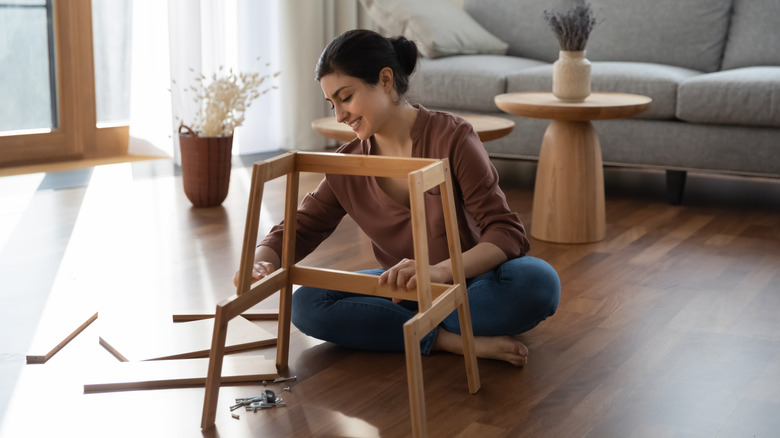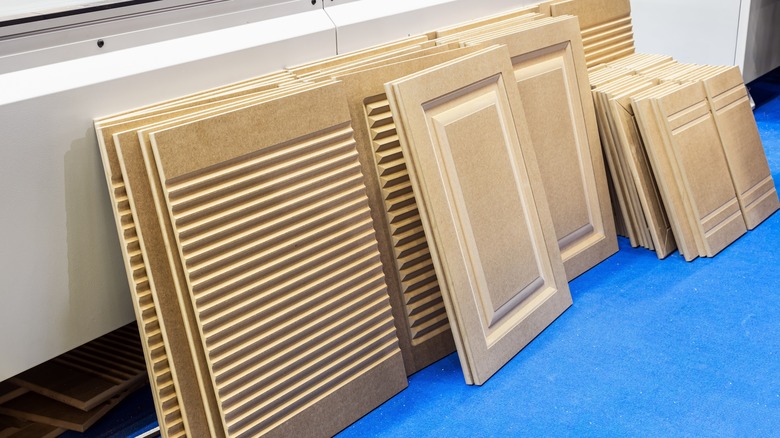How MDF Furniture Might Be Irritating Your Respiratory System
MDF wood (or medium density fiberboard) is a common building material made from wood waste and fibers, typically bound together with formaldehyde-based glue, pressure, and heat. It is used in cabinetry, furniture, and home construction. MDF can off-gas (which means it releases particles into the air) formaldehyde, which is a volatile organic compound (VOC) that has been identified as a cancer-causing agent by the Environmental Protection Agency. This is true even though formaldehyde is a naturally organic chemical common in most living things. But the question is, does MDF release sufficient formaldehyde to cause negative health effects? If you're breathing the VOCs produced by MDF at high levels, it could cause respiratory distress, negative health effects, and irritation. However, newer regulations and other factors can lower the off-gassing, which means it's likely still safe to use this material around your home.
Subsequent to regulations developed prior to 2020, the amount of formaldehyde that MDF is allowed to off-gas is now lower. For most MDF sheet stock, the allowable rate is 0.11 parts per million (ppm). This means that new furniture built with MDF will have fewer VOCs being released. Another factor is that over time, the rate of VOC that MDF releases will decrease. So older furniture will have likely already released their VOCs. Temperature and relative humidity affect the rate too, as does the amount of air moving through an area. If it's cooler and dryer, it lowers the amount of VOCs being released. If your MDF furniture is sealed, painted, or finished, your VOC exposure may be lower as well.
Formaldehyde is the main focus of concern in MDF
VOCs (specifically formaldehyde exposure) has been researched vigorously over the last 30 years. Most of those studies found that sensitivity to airborne VOCs vary significantly from person to person. Many of us have experienced something similar; one person may be highly affected by fragrances in perfumes and others not at all. It's possible that the levels of VOCs from the wide array of MDF furniture and other types of MDF wood, such as paneling, flooring, and decorative moldings, is strong enough to irritate some people.
But it's complicated, since determining whether it's VOCs from your MDF furniture causing your discomfort or some other source will be exceptionally difficult to determine. And in fact, where the VOCs come from specifically is not especially important, as myriad building materials off-gas formaldehyde. One step that will absolutely help is to increase the air flowing through your home, which can remove or reduce the amount of VOCs in your environment.
How much formaldehyde is safe for us to breathe? That is a very tough question to answer. The quick answer to "How much cancer-causing gas should I inhale?" obviously seems to be "none." However, note that OSHA allows some exposure in the workplace over an eight-hour time frame. If using those parameters as a guideline, it is reasonable to say that the health risk in your home from MDF furniture off-gassing is probably low unless you have a specific sensitivity to formaldehyde. While this is a general statement, if you have asthma or other respiratory issues, formaldehyde may be a problem for you. Sensitivity varies from person to person.
What does your body tell you about formaldehyde?
So, the off-gassing from MDF is generally safe, but even so, you may experience some sort of irritation in your nose or respiratory system. This would be most likely in a newly built home — but even there, the off-gassing from MDF will only be part of the total VOCs that may come from carpets, any engineered or laminate wood flooring, spray foam insulation, and certain finishes and paints. Some pieces of furniture may put your head closer to the source of the irritation. For example: a bed with a large MDF headboard. Again, the exact amount that the MDF will release is variable, but it's less than 0.11 ppm.
Furniture and cabinets that are built using MDF with lower levels of formaldehyde are listed as CARB (California Air Resources Board) compliant, but even natural wood releases about 0.01 ppm of this organic chemical. That said, furniture built from solid wood will produce VOCs than MDF. And some MDF is made with different binding chemical and don't release any formaldehyde. They are identified NAF for "no added formaldehyde."
Are those other binding chemicals safer? Maybe — that is yet to be determined. Most of the MDF manufactured around the world is made from wood waste and fibers, but some are made from rice or wheat straw — once again, it's the chemical binders used to make them which determines if they spew formaldehyde. While there is some chance that MDF made with formaldehyde is causing you some nasal irritation, but respiratory and health risks are still low according to the World Health Organization.


